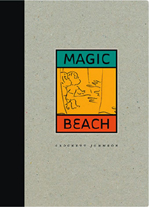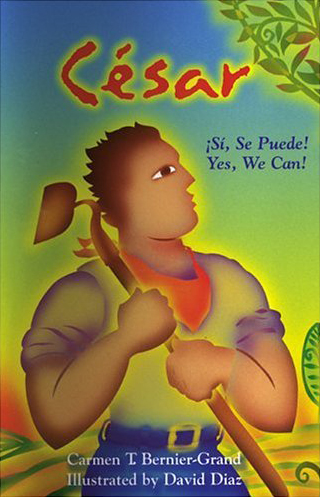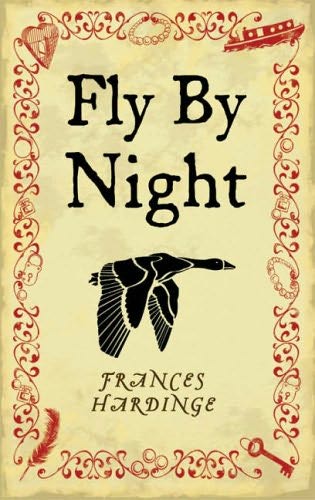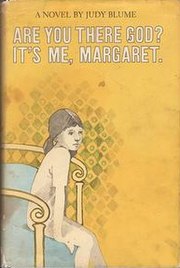And you thought my Philip Nel post was just an act of idle speculation. Not so much, sweeties. Turns out I've been mighty interested in the man's work on "Magic Beach". It fell into my lap... but I'll hand you over to the review to explain that much...:

I've made a terrible mistake. Can there be such a thing as doing too much research on a children's book? It seems ridiculous, really. Especially since I write reviews for Amazon.com and not some high-falutin' literary journal like "Children's Literature In Education" or "The Lion and the Unicorn". When it came to the recent publication of Crockett Johnson's ridiculous and fascinating, "Magic Beach", however, I felt ill-prepared to review the puppy without a little background information on my side. Fortunately, this is one book with a pedigree that is easy to follow. From its famous (and long-dead) author to its Forward by Maurice Sendak to finally an Afterword by Crockett scholar Philip Nel, the story of how the book came to its present form is just as interesting as the tale it tells. The only problem now is that I almost feel I know too much about the title. With some difficulty I will try to parse what I know from what I think and hope it all comes out relatively coherant. This is by no means a book meant for children and one might wonder whether its existence as a purely historical document justifies such vast publication at all, but it certainly is an interesting little thing and a fairly nice read to boot.
Ann and Ben, two children, walk along a seashore from their cottage. Ann complains of boredom but Ben points out that stories are far more interesting when you go out and make them rather than stay inside and read them. In the course of their somewhat philosophical squabbling Ben happens to write the word "JAM" in the sand. A breaking wave floods the word and suddenly a silver dish full of jam appears by magic. Further experiments with "BREAD", "MILK", and "TREE" yield similar results. The children are now interested in the turn their day has taken and Ben reasons that if there is magic then this must be a magic kingdom. Ipso facto, a magic kingdom must be ruled by a king. Once Ben has written the word "KING" in the sand, however, the tale takes a turn towards the peculiar. The king, morose and unhelpful, speculates that the spell cast comes from the children themselves. Once they've created a kingdom in full and a horse with which to ride to his castle, the king insists that the children leave the kingdom proper. All too soon, however, the sea comes and swallows up the world the children created with just words in the sand. At the end, they stand on a sandbank and view the calm clear sea. Ann suggests that the story may be continuing sight unseen, "But Ben had his ear to the shell, and he was listening to the sea".
You know you're in trouble when you've read a book of 53 pages, pictures included, and you suddenly decide that you need to polish up on your Arthurian legends ("Fisher King" anyone?) as well as your T.S. Eliot. I'm a rather big fan of Ursula Nordstrom (original editor of Crockett Johnson) so I scanned the book, "Dear Genius: The Letters of Ursula Nordstrom" for any reference to "Magic Beach" available. Unfortunately, such letters were not deemed particularly interesting by Leonard S. Marcus and I had to be content to rely on scholar Philip Nel for information regarding this book's history. According to his Afterword, Nordstrom did not feel that the book was written with children as its intended audience. As the Kirkus review of "Magic Beach" puts it so succinctly, "Johnson's editor Ursula Nordstrom didn't think this was a story for children. As in so much else, she was right -- but it does make a handsomely packaged artifact for adult readers of children's literature". This is why I hate to read professional reviews before writing my own on Amazon. Too often they say exactly what I would like to, only far far better.
Published by the truly eclectic publisher Front Street the book has been reproduced with Johnson's original illustrations. Of course, they weren't exactly polished when he set them down in the first place, never to return to them again. They're just the faintest of outlines on a brown paper background. Maurice Sendak prefers them in their "diamond-in-the-rough" form, though. "The sketches were intended only to show his editor the direction he meant to go in, but, for me, they are as finished as any illustrations he ever did. Only better". Which is why, ladies and gentlemen, we do not allow artists full license over the works of their contemporaries. The pictures are certainly nice in a this-is-how-an-artist-works process. Just don't go thinking that had Johnson included (oh, I dunno) color they wouldn't have been preferable. And to present them in this original outline is to basically tell your readers: For adults only. Children were not the focus of the original tale and they are certainly not the focus of it now. Still, in the Oct. 13, 2005 edition of Publisher's Weekly, editor Stephen Roxburgh had this to say of the galleys: "It was not broken, so we did not fix it". All well and good though I didn't know if I could completely agree with his statement that, "children even more than adults appreciate 'the richness, fullness, gradations and subtleties' of book illustration". Hence doing away with that richness altogether? Confoosing to say the least.
Perhaps the most telling piece of evidence in the midst of all this information is the fact that "Magic Beach" WAS published in 1965 as "Castles In the Sand". The illustrations were drawn not by the great man himself but rather by one Ms. Betty Fraser. I have not seen "Castles In the Sand" myself (though I was sorely tempted to buy a copy from EBay for the sole purpose of this particular review) but if Fraser's work in other areas is any indication, the book must've been a violent departure from Crockett's original vision. The fact that tracking down a copy of "Castles In the Sand" is as difficult as it is speaks volumes about how unremarkable it was. And call "Magic Beach" what you will, it is not unremarkable. I know that I've complained and caterwauled over authorial/editorial/Sendakian intent till I was blue in the face but when it comes down to it, I liked this book. I liked the story. I liked Johnson's method and what he was saying with a title that, in many ways, was a kind of anti-"Harold and the Purple Crayon". Instead of creating a world (which they do initially) our boy and girl heroes create AND destroy it in one fell swoop. And who is to say that any of it was real after all? Harold has the comfort of crawling into a bed he has drawn himself. Ann and Ben are left only with seashell and a potentially drowned monarch.
I would not hand "Magic Beach" to the child that is far more attuned to the equally misleadingly simple, "Don't Let the Pigeon Drive the Bus", but there is no denying that some kids would get a lot out of this tale. In any case, it's certainly a picture book for grown-ups, and I recommend it to them without hesitation. Lovely, curious, and cruel. A wonderful experience for those who chance upon it.



























